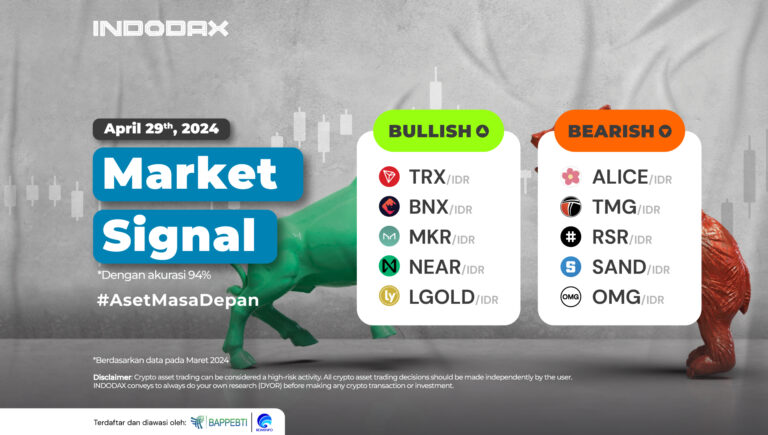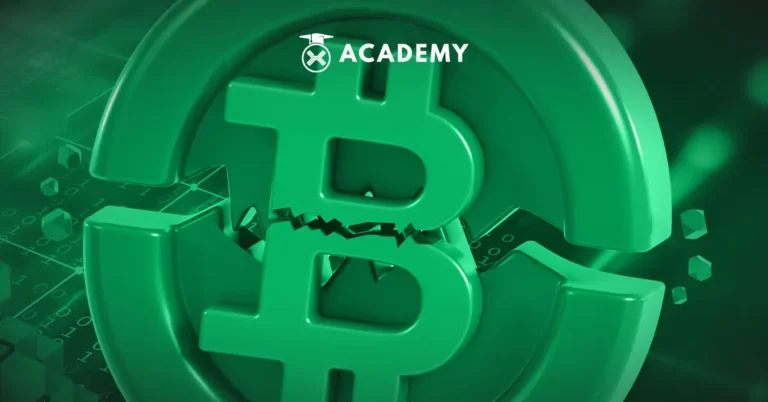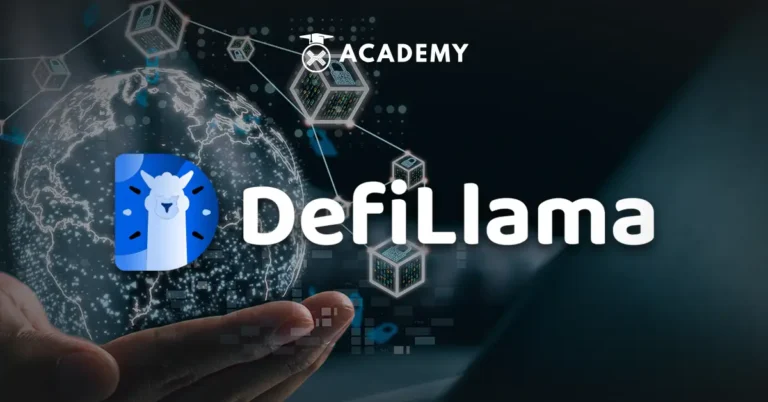At the end of 2022, a new blockchain layer-1 called Aptos emerged amidst a sluggish (bear) market. Aptos is a crypto initiative initiated by a group of developers previously involved in the Meta (Facebook) project. These developers previously worked on Meta’s blockchain project known as Diem. After discontinuing Diem, the development team disbanded and began working on various crypto projects independently, including Aptos. The development team, which was previously associated with Diem, also created Sui as a result of their work.
Sui itself exhibits fundamental differences with a large number of other blockchains in its structure and approach. Most blockchains generally store transaction data chronologically, from the first transaction to the most recent, as is the case with Bitcoin, Ethereum, and Solana.
To understand more about Sui, from the understanding, roadmap, and how it works to technological innovation, check out the following reviews!
What is Sui?
Sui is a permissionless layer-1 blockchain developed by the ex-Meta team. Designed as a smart contract platform, Sui aims to fulfill multiple needs in one ecosystem. The announcement of this project, alongside Aptos, marks Sui’s presence in the trend of layer-1 crypto projects trying to compete with Ethereum.
Sui’s development team states the platform can process over 100,000 transactions per second (TPS). Sui’s uniqueness lies in the parallel execution of transactions through an object-centric processing approach that differentiates it from conventional blockchains.
As mentioned earlier, Sui’s development team comprises ex-Diem Meta developers who created the Move programming language. Move is used by both Sui and Aptos. Since its announcement, Sui has gone through two rounds of funding, series A and B, totaling $336 million, close to the amount raised by Aptos, which was $350 million. As of now, Sui has recently completed the second testing stage on the testnet, with the participation of 41 validators who processed 36.5 million transactions from 1.6 million addresses.
SUI Technology

Within the SUI blockchain, several technologies can be utilized, including:
1. Sui Move: The New Foundation of Secure Smart Contracts
Sui Move serves as a tool for defining, creating, and managing Sui objects that can be programmed to represent assets at the user level. By adding new functionality to Move, Sui also imposes additional restrictions to increase its level of security. Sui Move is a programming language specifically designed for creating smart contracts on the Sui platform.
In addition, the program was developed in conjunction with Sui Prover, a tool that examines the code in smart contracts to ensure security and proper functionality. Sui Prover can be applied in various stages of smart contract testing, making it easy for developers to ensure the security of their applications.
The main concept in Sui Move is smart contracts referred to as Packages. Each Package contains various separate modules that define specific functions. The module system simplifies implementation and optimization, and when a module is updated, all smart contracts that use that module automatically switch to the latest version. Sui has also published a dedicated document that provides guidance on how to create smart contracts in Move, providing a valuable source of information for developers working with the platform.
2. Processing Object-Based Transactions: A New Paradigm in Blockchain
Notably, Sui chose not to sort transactions by time order because the platform processes transactions based on objects rather than transaction subjects, such as addresses or accounts, to improve the efficiency of its network. In this approach, each object can only be processed by its owner’s address, ensuring a level of security comparable to other blockchains.
In the Sui structure, object-based transactions are divided into two categories: single-owner and shared objects. An object is basically a term for data in the Sui network, with each object having a unique ID, and smart contracts in Sui are referred to as Sui Move Package.
Single-owner objects are individually processed, such as NFT creation and asset transfer. Each single-owner object is owned by only one address, although an address can own multiple objects. On the other hand, shared objects are objects used by more than one user simultaneously, such as in auctions and DEXs with order books. Multiple addresses can own a shared object.
Both types of objects are processed with different methods. Single-owner objects do not require a consensus system and can be directly processed by validators in no particular order, with Sui using the Fastpay system for this type of object. Meanwhile, shared objects involve the Bullshark and Narwhal consensus mechanisms, which process transactions in a structured manner, with each shared object keeping its transaction history. The transaction processing of these two types of objects can be illustrated as distinct paths, enabling Sui to validate transactions in parallel, improving network efficiency and performance.
3. Narwhal and Bullshark: Consensus Mechanisms that Make Sui Efficient
The consensus mechanism in Sui utilizes two Directed Acyclic Graph (DAG) based protocols, namely Narwhal and Bullshark. Both of these consensus protocols operate using Delegated Proof-of-Stake (DPoS). The functions of each of these protocols are different and complementary in achieving consensus. It is important to note that Sui’s consensus mechanism is used specifically to process shared object transactions that are organized based on causality rather than transaction time order.
In its operation, Sui adopts Narwhal as the mempool and Bullshark as the consensus engine to organize the sequence of transactions that require causality. Narwhal is responsible for ensuring the availability of data submitted to the consensus process, while Bullshark approves a certain order of this data.
These two protocols work synergistically to synchronize transactions between validators and periodically check the overall status of the Sui network. As such, Narwhal and Bullshark complement each other to ensure the efficiency and operational integrity of the Sui consensus mechanism.
Sui Roadmap
In May 2022, Sui released its Devnet, operated by at least 4 nodes managed by Mysten Labs and Sui Explorer. Despite the Devnet, no testnet has been introduced. The plan is to roll out testnets in stages to introduce and test features and mechanisms that support the mainnet, ensuring production readiness. Here are the details of the testnet that will be implemented, namely:
1. Network
Testnet will first compose a multi-entity public Sui network. Various aspects will be tested, such as the distributed genesis ceremony, validator configuration, operational coordination, and basic network operations. Developers will also be given the opportunity to implement and test these features in the testnet.
2. Staking
The staking concept, commonly used in Proof-of-Stake consensus, will be introduced in the testnet. Developers can use this opportunity to implement staking concepts in the testnet. All entities will be allowed to collect enough SUI tokens to act as validators in Sui’s Delegated Proof-of-Stake (DPoS) mechanism.
3. Update
This stage will provide operators with step-by-step experience in handling major network operations. This includes changes in the validator set, software updates, and responses to incidents that may occur during operation.
How Sui Blockchain Works

Like most other layer-1 blockchains, Sui adopts proof-of-stake architecture (PoS) as its main consensus mechanism. In PoS networks, validators are used to process transactions. In addition, Sui also supports smart contracts, which are written using the Move programming language.
This programming language is similar to Rust, which platforms like Near, Solana, and Polkadot use. Sui adjusted the Move programming language to meet its special needs, and the modified version is referred to as Sui Move.
Sui stands out with a fundamental difference from various other blockchains. Generally, blockchains store transaction data chronologically, from the first transaction to the most recent, as Bitcoin, Ethereum, and Solana do. However, Sui adopts an approach where most transactions are processed without following a specific order.
However, some transactions in Sui are organized by quality (cause-and-effect), where transactions 1, 2, and 3 are closely related. Sui maintains a history of these related transactions in this context, from the genesis phase to the most recent. This approach reflects Sui’s innovation in storing and managing transaction data within the blockchain ecosystem.
1. Object-based Transaction Validation System: Flexibility without Time Constraints
Basically, Sui does not sort transactions by time order. This is because Sui processes transactions based on objects instead of transaction subjects, such as addresses or accounts, intending to improve the efficiency of its network. Each object can only be processed by its owner’s address, so the system maintains security on par with other blockchains.
In the Sui ecosystem, transactions created based on objects are divided into two categories: single-owner and shared objects. Single-owner objects are individual objects that are processed one by one, such as the creation of NFTs or the sending and receiving of assets. Each single-owner object belongs to one address, while one address can have multiple objects. On the other hand, shared objects are objects used by more than one user simultaneously, for example, in auctions or DEX with the order book. A shared object can belong to multiple addresses.
Both types of objects are treated differently in the process. Single-owner objects do not need to pass through the consensus system and can be processed directly by validators in no particular order, with Sui using a Fastpay-based system for this type of object. In contrast, shared objects involve Bullshark and Narwhal consensus mechanisms that process transactions in a structured manner. Each shared object keeps its transaction history. As an illustration, the transaction processing of these two types of objects can be envisioned as distinct paths, allowing Sui to validate transactions in parallel, improving the overall efficiency and performance of the network.
2. Parallel Transactions and Horizontal Scalability: High Efficiency without Security Compromise
The object-based transaction processing approach leads Sui to the advantages of parallel transaction execution. As shown in the illustration, transactions can be processed in no particular order if the objects involved are unrelated. Thus, in this situation, communication between validators is not required except for handling transactions involving the same object.
Essentially, each transaction is treated on separate lanes, which Sui calls the multi-lane approach. Validators can process Independent transactions without synchronization at the network level. The concept of “block” does not exist in the Sui network, as transactions are processed individually. This approach aims to reduce latency and the time taken for validation.
Transaction processing for single-owner objects requires no communication between validators, allowing each validator to process them efficiently. The process starts with a quorum driver (full node validator, RPC provider, or custodial wallet) that checks the validity of transactions and adds signatures to valid transactions. Next, the quorum driver collects signatures exceeding 2/3 of the total staking and converts them into certificates. These certificates are then received and processed by a group of validators before being returned to the quorum driver, signaling the completion of the transaction.
Most transactions are unrelated, so chronological sorting in blocks becomes unnecessary and can be considered an inefficient use of resources. Sui frees its network from this burden.
In a shared objects situation, after the validator receives the certificate, Narwhal is used to pass the certificate to Bullshark for sorting. Narwhal and Bullshark function as a Directed Acyclic Graph (DAG) based mem-pool with a consensus mechanism that supports Byzantine Fault Tolerant (BFT).
Sui overcomes a critical bottleneck that often arises on most blockchains, namely the need for global consensus on a chronologically ordered list of transactions. As such, Sui can achieve horizontal scalability by opening up as many transaction validation paths as possible. The more validators, the more paths available to process transactions. In addition, validators can upgrade their machine capabilities to open up more transaction processing paths. This horizontal scalability is one of the main advantages often cited in the context of Sui.
3. Sui Move and Sui Prover: Simplifying Development and Ensuring Security
Sui Move serves as a tool for defining, creating, and managing Sui objects that can be programmed to represent assets at the user level. By adding new functionality to Move, Sui also imposes additional restrictions to increase security. Additionally, Sui Move is identified as the programming language used to create smart contracts on the Sui platform.
Sui Move was developed in conjunction with Sui Prover, a tool that checks the code in smart contracts to ensure safety and proper functionality. Sui Prover can be used in various stages of smart contract testing, making it easy for developers to ensure the safety of their applications. The smart contracts in Sui Move are called “Packages”. Each Package contains various separate modules that each define a specific function. The module system simplifies implementation and optimization, and when a module is updated, all smart contracts that use that module automatically adopt the latest version.
Sui has also published a dedicated document that provides guidance on creating smart contracts within Move, providing a valuable resource for developers working with the platform.
Sui Blockchain Advantages
With several advantages that Sui has compared to various other blockchains, here are some of the Sui blockchain advantages to know about, including:
1. Parallel Transaction Processing: High Reachability in Network Performance
Sui adopts a transaction processing approach based on objects rather than accounts or addresses. With this system, Sui enables parallel transaction processing, where objects can be processed independently in separate lanes. Unsorted transactions by time can increase TPS, reduce latency, and improve efficiency on the Sui network.
2. Horizontal Scalability: Facing Network Growth Resiliently
Through its parallel system, the Sui network achieves horizontal scalability. The more validators involved, the more transaction validation paths can be opened. The computing power of each validator also affects the number of transaction paths that can be opened. This scalability is practically unlimited because the network is not burdened by sequential blockchain data storage, as with Bitcoin and Ethereum.
3. The New Standard in Smart Contract Creation: Sui Move
Sui Move is Sui’s modification of the Move programming language, used to create and manage smart contracts on the Sui platform. Sui Move’s advantages mainly lie in its enhanced security aspects, providing additional protection against potential security threats.
4. Efficient Consensus Mechanism: Ensuring Network Speed and Resilience
Sui implemented Bullshark and Narwhal as Directed Acyclic Graph (DAG) based consensus mechanisms. Both protocols are designed to process transactions quickly and minimize gas costs. Sui’s consensus mechanism is highly efficient as it is implemented specifically for shared object transactions, reducing the workload significantly.
Technological Innovations for the Future of Blockchain
SUI blockchain has entered a new stage in developing its technology with its official release. The SUI blockchain development team has ambitions to continuously improve its technology and expand its application to various sectors, such as finance and logistics. Not only that, SUI blockchain technology is also attracting the attention of many large companies that are interested in integrating this technology into their operations.
SUI blockchain’s launch and token value increase have revived interest in crypto. Its innovative tech and ability to tackle blockchain challenges drew attention. With bright prospects, the SUI blockchain is expected to become one of the leading blockchains in the future.
So, How to Buy Sui (SUI) on INDODAX?
Please note, at this time, the launch date of the SUI coin has not been confirmed. This will allow you to understand SUI better and plan your strategy before purchasing the coin.
You can keep tabs on the INDODAX app and website to get the latest information on SUI availability. While waiting for SUI’s launch, you can invest in crypto assets, such as Bitcoin, Ethereum, and others, without worrying about potential fraud.
That’s because, on INDODAX, all crypto assets have undergone strict evaluation and adhere to the precautionary principle. The INDODAX application has also been registered with the Commodity Futures Trading Supervisory Agency (BAPPEBTI) to guarantee users’ safety.
Conclusion
To conclude, Sui is a permissionless layer-1 blockchain developed by the ex-Meta team. Designed as a smart contract platform, Sui aims to fulfill multiple needs in one ecosystem. The project’s announcement, alongside Aptos, marks Sui’s presence in the trend of layer-1 crypto projects trying to compete with Ethereum.
Like most layer-1 blockchains, Sui adopts proof-of-stake (PoS) architecture as its main consensus mechanism. Validators process transactions in a PoS network, and Move is the programming language used to write smart contracts in Sui. Meanwhile, the advantages of Sui, when compared to other blockchains, include (1) parallel transaction processing, (2) horizontal scalability, (3) Sui Move, and (4) efficient consensus mechanism.








